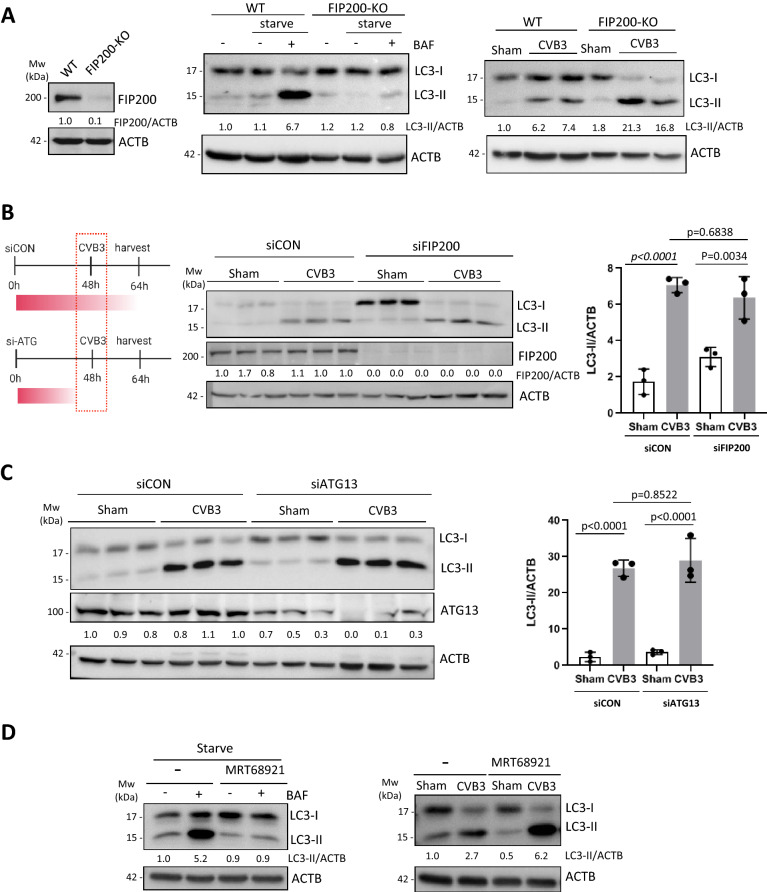Figure 2.
CVB3-induced LC3 lipidation occurs independent of FIP200 and ATG13. (A) FIP200-KO HEK293A cells were established through CRISPR-Cas9 gene editing. Knockout efficiency was validated by western blotting (left panel). WT-HEK293A or FIP200-KO cells were cultured in either normal medium, HBSS starvation medium, or starvation medium supplemented with 200 nM bafilomycin (BAF) for 2 h (middle panel). WT or FIP200-KO cells were sham- or CVB3-infected for 16 h (right panel). Western blotting was performed for analysis of LC3 lipidation. (B,C) Schematic of siRNA-based gene silencing and CVB3 infection schedule (left), HEK293A cells were transiently transfected with scrambled siRNA control (siCON) or siRNAs against FIP200 (B) or ATG13 (C) for 48 h. Cells were then subjected to sham or CVB3 infection for an additional 16 h. Western blotting was conducted to determine knockdown efficiency and LC3 lipidation. Densitometry was measured as above and the results are presented either underneath the blots or in the right panel (mean ± SD, n = 3, analyzed by one-way ANOVA with Tukey’s post-test). (D) HEK293A cells were treated with a selective ULK1/2 kinase inhibitor (MRT68921, 5 µM) under starvation for 2 h in the presence or absence of 200 nM BAF (left panel). HEK293A cells were sham- or CVB3-infected for 16 h with or without 5 µM MRT68921 (right panel). Western blotting was performed to examine LC3 levels and the quantified results are shown underneath the blots.

